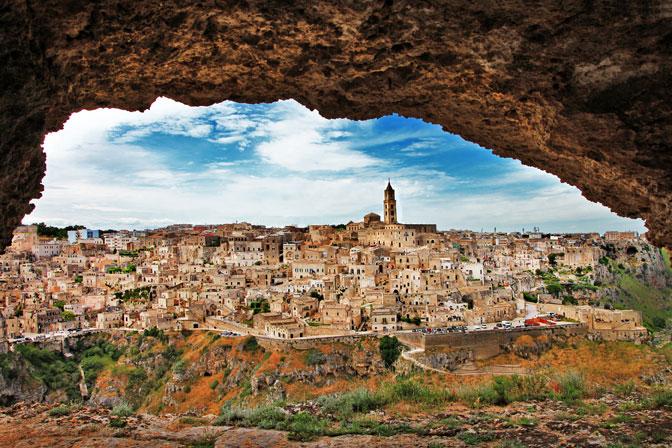words by Jasleen Kandhari
"Har Har," cry the elderly farmers nimbly striking the oxen as they make their way slowly but surely along the 15-kilometre route in Accettura carrying a large oak tree trunk. This procession amidst much fanfare was a fascinating sight for the tree trunk or ‘maggio’ (the male tree) would be united with the elm tree trunk or the 'cima' (the female tree) which was being carried by the youthful men of the village at the same time, along a different route in a contest to see who got their tree trunk to the final destination first.

It was a lively experience being at the heart of the Marriage of the Trees Festival. This event is held every May, fifty days after Easter in the town of Accettura in the region of Basilicata, a lesser known and well-preserved province of southern Italy between the Ioanian and Tyrrhenian coasts. Singing, dancing, laughing, eating and drinking wine and beer straight out the barrels are de rigueur during the lively procession.
After the festival, I went back to the serenity of picturesque Matera, a UNESCO World Heritage Site constructed out of ancient caves, rock churches with an enchanting atmosphere where “stones become words.” Exploring the Sassi district of Matera is a fascinating experience for restaurants, churches, the theatre, homes and hotels are uniquely constructed and carved within the ancient cave dwellings of the tufa stone.

The Sassi was also the film location for Mel Gibson's notable film, 'The Passion of the Christ'. I was informed that Gibson spent a lot of time in the haunting rock churches including Santa Maria Maggiore, where he contemplated the climatic Crucifixion of Christ scene for two days. Hiking to the top of the ravine with breathtaking views of the Sassi, I ventured into the cave which was used as Gibson's green room during the filming process. Once used as an ancient rock church, the cave was lined with frescoes; some of them were missing certain parts of the facial features of religious figures as they were stolen before the caves were gated. The hunt to find them and bring them back to Matera is currently under way.
The scene of Judas being hanged in Gibson's film was conducted in the ghost town of Craco, where, due to urban landslides in the mid-20th century, the town's 2,000 residents had to abandon their homes rendering Craco a desolate place where time seems to have stopped. Now it has reopened to the public as an open-air museum where I embarked on an interesting guided tour to see the crumbling ruins of homes including bakeries, churches, the city hall and even a carabinieri jail.

Driving on to the coastal town of Metaponto, I explored the Metaponto Archaeological park with its preserved ancient Roman monuments. Nearby lie the remains of the Doric style temples of Hera and Apollo where the Palantine Tables lay, for this town is also famous for being the home of the father of numbers, Pythagoras. It is also the last place that Spartacus hid in his fight against the Romans before being dramatically crucified. Metaponto is a coastal town with sandy beaches overlooking the scintillating Ionian sea. After exploring the cultural heritage of the enchanting Sassi in the underground cave sites, reposing along the sea was a befitting manner to end my Basilicata sojourn.
Further information: www.discoverbasilicata.com







